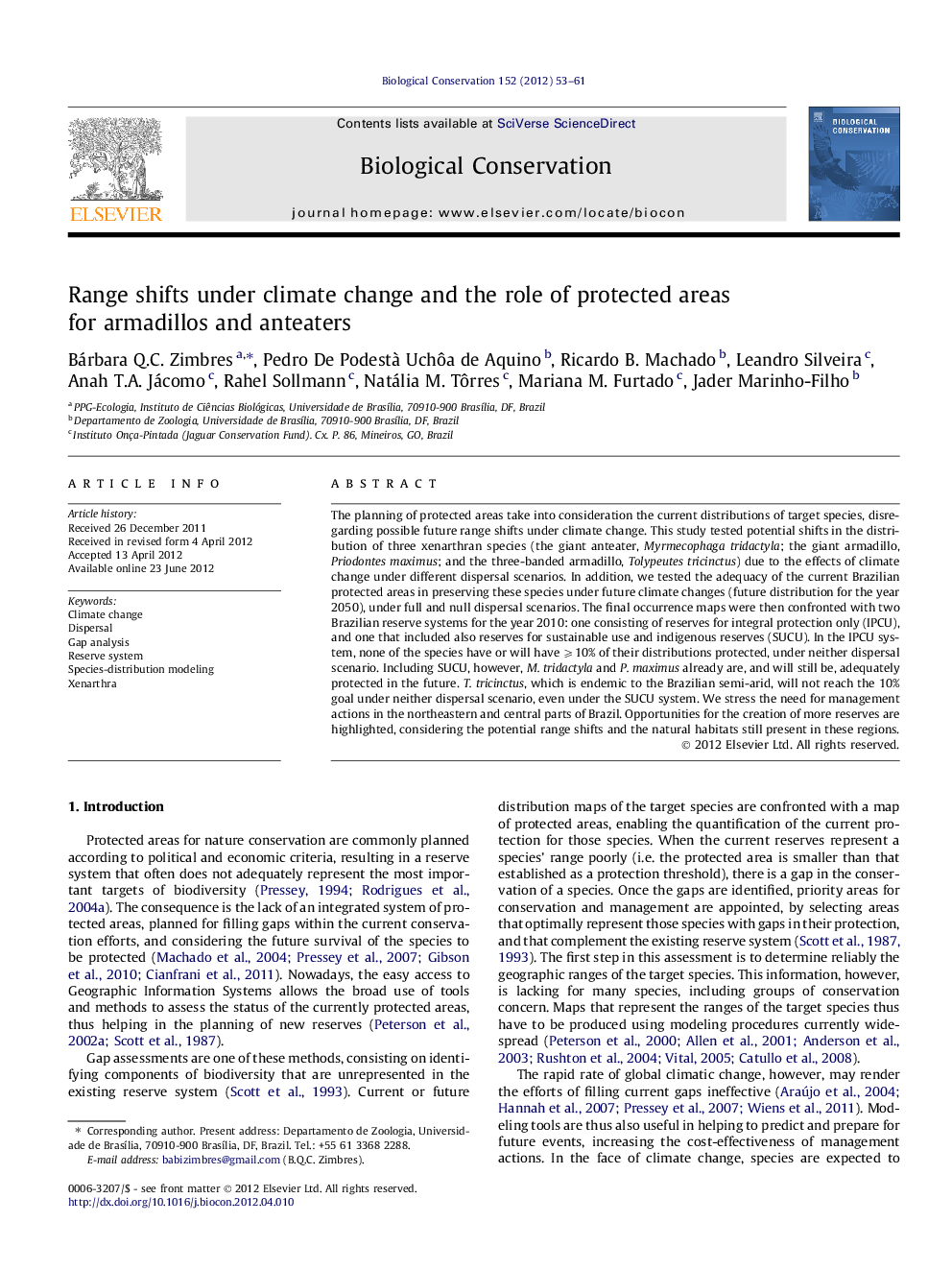| کد مقاله | کد نشریه | سال انتشار | مقاله انگلیسی | نسخه تمام متن |
|---|---|---|---|---|
| 4385246 | 1617949 | 2012 | 9 صفحه PDF | دانلود رایگان |

The planning of protected areas take into consideration the current distributions of target species, disregarding possible future range shifts under climate change. This study tested potential shifts in the distribution of three xenarthran species (the giant anteater, Myrmecophaga tridactyla; the giant armadillo, Priodontes maximus; and the three-banded armadillo, Tolypeutes tricinctus) due to the effects of climate change under different dispersal scenarios. In addition, we tested the adequacy of the current Brazilian protected areas in preserving these species under future climate changes (future distribution for the year 2050), under full and null dispersal scenarios. The final occurrence maps were then confronted with two Brazilian reserve systems for the year 2010: one consisting of reserves for integral protection only (IPCU), and one that included also reserves for sustainable use and indigenous reserves (SUCU). In the IPCU system, none of the species have or will have ⩾10% of their distributions protected, under neither dispersal scenario. Including SUCU, however, M. tridactyla and P. maximus already are, and will still be, adequately protected in the future. T. tricinctus, which is endemic to the Brazilian semi-arid, will not reach the 10% goal under neither dispersal scenario, even under the SUCU system. We stress the need for management actions in the northeastern and central parts of Brazil. Opportunities for the creation of more reserves are highlighted, considering the potential range shifts and the natural habitats still present in these regions.
► We model shifts in the ranges for three Brazilian threatened xenarthran species.
► We perform gap analyses to assess the adequacy of the Brazilian reserve systems.
► Two types of reserves were compared: integral protection only, and reserves for sustainable use.
► Tolypeutes tricinctus is not and will not be adequately protected under any scenario.
► We indicate areas for conservation of the species under a pessimistic scenario.
Journal: Biological Conservation - Volume 152, August 2012, Pages 53–61